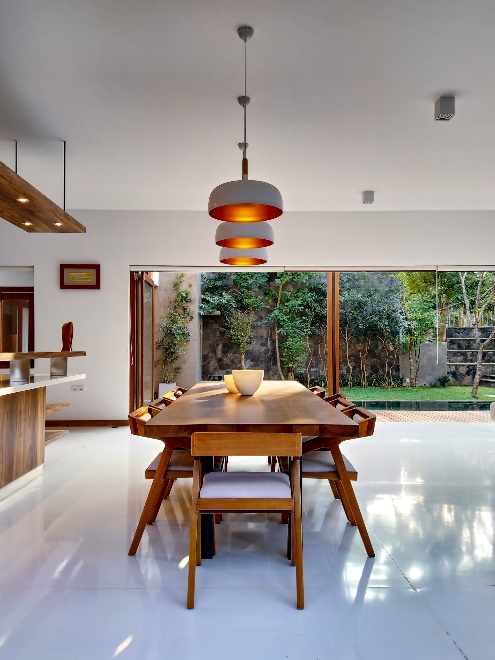An often-overlooked element, lighting in interior design can make or break the design of an otherwise brilliant and beautiful home. Lighting should be considered from the very beginning of a design but is often an afterthought, treated more like an accessory than a critical factor.
Natural light, ambient lighting, task lighting, and accent lighting work together to establish functional and inviting spaces, defining use and create mood. When beginning to make lighting choices, determine all the ways a space may be used, and the type of lighting all the uses require.
Natural light makes spaces appear larger, reduces the need for artificial lighting, connects people to nature and enhances a sense of well-being. Natural lighting in interior design should be considered when selecting colors for walls, accessories and surfaces, as they can change dramatically as the light changes throughout the day and on cloudy days. A color that delights in the morning light can become muddy an unappealing later in the day, or a beautiful blue can read gray, for example.
Ambient lighting takes over when there is no natural light either in a windowless room or after the sun sets. Ambient lighting is often referred to as general lighting and includes all types of ceiling fixtures, such as ceiling lights, fan kits on ceiling fans, recessed lights and chandeliers. Ambient lighting in interior design offers opportunity for beautiful form to follow function. There are so many choices in style and design.
Task lighting is exactly what it implies: the lighting required to efficiently complete a task. Undercabinet lights in the kitchen and the lamp on a desk or beside a chair where you’ll curl up to read are examples of task lighting in interior design.
Accent lighting in interior design emphasizes an element of your design to create interest or drama, set a mood, create illusion or highlight or camouflage architecture. A light above artwork, table lamps in seating areas, sconces that shine upward, or using a light to draw attention away from the less desirable are examples of accent lighting in interior design.
An additional consideration of lighting in interior design is the choice warm light versus cool light. Warm light has yellow tones. Cool light has blue tones. Warm light lends itself to creating inviting cozy spaces. Cool light may better serve task lighting.
Strategically employing these four layers of lighting in interior design can make a good interior great and take a great interior to new heights. Considering the crossover between the uses means the possibilities for creativity and fun are endless. For example, dimmers on ceiling fixtures and task lighting moves them from general lighting and task lighting to accent lighting, creating mood.
The earlier in your design process you can consider these layers of light, the better the result. If you’re building, how your structure is situated on the lot or mature trees will dictate natural light. Adding recessed lighting to the kitchen design and where ceiling fixtures will be located should be discussed at the beginning of the process. Evaluating furniture placement choices can help with decisions about where outlets, and how many, will be needed for accent and task lighting. Most communities have building codes that dictate minimums in that regard, but you can discuss additional outlets with your builder.
Lighting is an affordable way to refresh the look or change your style. The choices of lighting in interior design are exciting and endless! Explore these articles for more information.
The Importance of lighting: this is how you do it.
Importance of Lighting in Interior Design
How to Properly Light Your Home for Interior Design Style and Function

